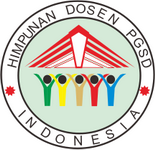THE EFFECT OF KAHOOT GAMIFICATION STRATEGY ON IMPROVING MATH COMPREHENSION IN ELEMENTARY SCHOOL STUDENTS
DOI:
https://doi.org/10.31949/jcp.v11i2.13201Abstract
Mathematics is one of the subjects that is considered difficult and less attractive, which has an impact on students' low understanding of concepts. One of the obstacles in learning is the limitation of technology, especially the unavailability of adequate computer equipment in the classroom. This condition hinders the application of interactive learning media that can increase student interest and understanding. This study aims to analyze the effect of gamification strategy using Kahoot technology on improving mathematics understanding of grade 3 elementary school students. The method used was a quasi-experiment with a quantitative approach, comparing two classes: an experimental group using Kahoot and a control group using conventional learning methods. The research was conducted in grade 3 of MI Muhammadiyah Gonilan. Data analysis included normality test, Wilcoxon test, and N-gain test. The results showed the average post-test score of the control class was 74.73 and the experimental class was 82.10. The findings show that gamification strategy using Kahoot has a positive and significant effect on improving students' math comprehension.
Keywords:
Gamification, Kahoot, Math ComprehensionDownloads
References
Alfidya Pagau, D., & Mytra, P. (2023). The Effect of Technologi in Matematics Learning. Jurnal Penelitian Matematika Dan Pendidikan Matematika. https://doi.org/10.30605/proximal.v5i2.2302
Alianas. (2023). Pengaruh Media Game Edukasi Kahoot Terhadap Hasil Belajar Siswa Kelas VII SMPN Sungguminasa Kabupaten Gowa.
Anggraeni, Y., & Sujatmiko, B. (2021). Studi Literatur Pengaruh Penggunaan Gamifikasi dalam Pembelajaran Ilmu Komputer di Perguruan Tinggi (Vol. 05).
Anviani, R. (2022). Penggunaan Aplikasi Kahoot! dalam Meningkatkan Hasil Belajar Siswa. 3(1), 2723–8199. https://doi.org/10.21831/ep.v3i1.31746
Ariani, D. (2020). Gamifikasi untuk Pembelajaran. Jurnal Pembelajaran Inovatif, 3(2), 144–149. https://doi.org/10.21009/jpi.032.09
Arikunto, S. (2013). Prosedur Penelitian Suatu Pendekatan Praktik. Rineka Cipta.
Azwar, S. (2013). Metode Penelitian. Yogyakarta: Pustaka Pelajar.
Creswell, J. W. (2014). Research Design: Qualitative, Quantitative, and Mixed Methods Approaches. Sage Publications.
Lovandri, D. P., Hidayat, F. N., Izzati, I. N., & Ramadhan, M. A. (2024). Penerapan Gamifikasi untuk Meningkatkan Motivasi dan Kolaborasi pada Siswa Sekolah Dasar (Vol. 4).
Emilio, A., Safitri, D., & Info, A. (2024). JICN: Jurnal Intelek dan Cendikiawan Nusantara Tinjauan Pengaruh Platfrom Kahoot Terhadap Pembelajaran Interaktif Overview of The Effect of The Kahoot Platfrom on Interactive Learning. 1(3). https://jicnusantara.com/index.php/jicn
Fazriyah, N., Saraswati, A., Permana, J., & Indriani, R. (2020). Penggunaan Aplikasi Kahoot pada Pembelajaran Media.
Giriansyah, F. E., Pujiastuti, H., & Ihsanudin. (2022). Kemampuan Pemahaman Matematis Siswa Berdasarkan Teori Skemp Ditinjau dari Gaya Belajar. Jurnal Cendekia: Jurnal Pendidikan Matematika.
Hakeu, F., Pakaya, I. I., & Tangkudung, M. (2023). Pemanfaatan Media Pembelajaran Berbasis Gamifikasi dalam Proses Pembelajaran di MIS Terpadu Al-Azhfar. Awwaliyah: Jurnal Pendidikan Guru Madrasah Ibtidaiyah, 6(2), 154–166. https://doi.org/10.58518/awwaliyah.v6i2.1930
Hermawan, V., Anggiana, A. D., & Septianti, S. (2021). Analisis Kemampuan Pemahaman Matematis Melalui Model Pembelajaran Student Achievemen Divisions (STAD). Pasundan Journal of Research in Mathematics Learning and Education.
Husnawati, Z., & Carina, A. (2023). Gamification (Kahoot) and Its Usage in Teaching and Learning Process for Primary Education of SD/MI (Vol. 6, Issue 3). www.kahoot.com
Jusuf, H. (2016). Penggunaan Gamifikasi dalam Proses Pembelajaran. In Jurnal TICOM (Vol. 5, Issue 1).
Maulida, B. A., Albahij, A., & Mufidah, L. (2024). Pengaruh Penggunaan Teknologi TPACK dalam Meningkatkan Minat Belajar Matematika Peserta Didik SD Kelas 4.
Nakiyemba, S. (2024). Impact of Gamification on Knowledge Acquisition. In European Journal of Information and Journal Management ISSN (Vol. 3, Issue 1). www.carijournals.org
Nuraeni, Mulyati, E. S., & Maya, R. (2018). Analisis Kemampuan Pemahaman Matematis dan Tingkat Kepercayaan Diri Pada Siswa MTs. Jurnal Pembelajaran Matematika Inovatif.
Puspitasari, R., Suparman, S., & Fahrunnisa, F. (2023). Pengaruh Media Pembelajaran Kahoot Berbasis Game Based Learning terhadap Minat dan Hasil Belajar Peserta Didik. Edukatif: Jurnal Ilmu Pendidikan, 4(6). https://doi.org/10.31004/edukatif.v4i6.4382
Putra, A., & Afrilia, K. (2020). Systematic Literature Review: Penggunaan Kahoot pada Pembelajaran Matematika. Jurnal Ilmiah Pendidikan Matematika Al-Qalasadi, 4(2), 110–122.
Putrawangsa, S., & Hasanah, U. (2018). Integrasi Teknologi Digital dalam Pembelajaran di Era Industri 4.0 Kajian dari Perspektif Pembelajaran Matematika. Jurnal Tatsqif: Jurnal Pemikiran Dan Penelitian Pendidikan, 16(1).
Rizekia, S., Assegaf, Z., Susanti, W., Esi, N., & Yani, A. (2022). Aplikasi Kahoot pada Pembelajaran Matematika Materi Sistem Persamaan Linear Dua Variabel. Adiba: Journal of Education, 2, 507–516.
Shofiah, N. F., Purwaningrum, J. P., & Fakhriyah, F. (2021). Kemampuan Pemahaman Konsep Matematis Siswa Sekolah Dasar melalui Pembelajaran Daring Dengan Aplikasi Whatsapp. Edukatif: Jurnal Ilmu Pendidikan, 3(5). https://doi.org/10.31004/edukatif.v3i5.907
Slamet, R., & Wahyuningsih, S. (2022). Validitas dan Reliablitas terhadap Instrumen Kepuasan Kerja.
Sugiyono. (2018). Metode Penelitian Kuantitatif, Kualitatif, dan R&D. Bandung: Alfabeta.
Sugiyono. (2019). Metode penelitian kuantitatif kualitatif dan R dan D (Ed 2; Cet.1). Alfabeta.
Sulistiyawati, W., Sholikhin, R., Septi Nur Afifah, D., & Listiawan, T. (2021). Peranan Game Edukasi Kahoot! Dalam Menunjang Pembelajaran Matematika. Jurnal Matematika, 15(1).
Published
How to Cite
Issue
Section
License
Copyright (c) 2025 Putri Marlita Sari, Ratnasari Diah Utami

This work is licensed under a Creative Commons Attribution-ShareAlike 4.0 International License.
Authors who publish with this journal agree to the following terms:
- Authors retain copyright and grant the journal right of first publication with the work simultaneously licensed under a Creative Commons Attribution License that allows others to share the work with an acknowledgment of the work's authorship and initial publication in this journal.
- Authors are able to enter into separate, additional contractual arrangements for the non-exclusive distribution of the journal's published version of the work (e.g., post it to an institutional repository or publish it in a book), with an acknowledgment of its initial publication in this journal.
- Authors are permitted and encouraged to post their work online (e.g., in institutional repositories or on their website) prior to and during the submission process, as it can lead to productive exchanges, as well as earlier and greater citation of published work (See The Effect of Open Access).


